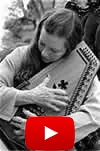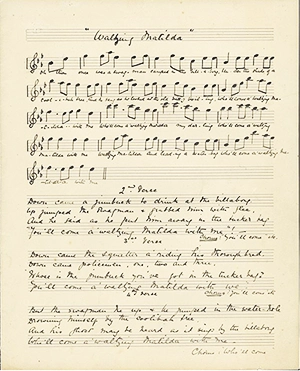Christina Macpherson Composed the Music for Waltzing Matilda

Portrait of Christina Macpherson
Contents
Who Was Christina Macpherson
It was Christina Rutherford Macpherson (1864–1936) who played a tune on her zither (autoharp) that inspired Banjo Paterson to write the lyrics to Waltzing Matilda, Australia’s most iconic folk song.
Her contribution in composing the music for Waltzing Matilda was only discovered in 1991 when one of her letters describing how she and Banjo Paterson collaborated in writing the song was discovered. Subsequently, a music sheet in Christina's handwriting was also discovered. These records clearly demonstrate that Christina played a vital part in the composition of the music for Waltzing Matilda. Without her contribution, there would have been no song called Waltzing Matilda.
Early Life and Background
Christina Rutherford Macpherson was born on 19 June 1864 at Peechalba Station (near Wangaratta), Victoria, Australia. She was the ninth of eleven children born to Ewen Macpherson and his wife Margaret Brown Rutherford who had migrated to Australia from Scotland around 1854. Peechalba Station, a property of about 150,000 acres was jointly owned by the Macphersons and Rutherfords. Over the years the Macphersons had become a well-to-do family of squatters (landowners) and owned numerous properties in Victoria, New South Wales, and Queensland. One of these was the quarter of a million acre Dagworth Station in Queensland where the song Waltzing Matilda would be composed.
Encounter with Mad Dan Morgan
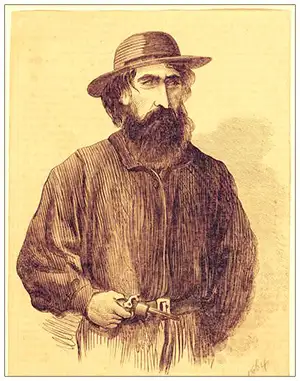
On 8 April 1865, the Macphersons were bailed up (held up) at gunpoint, at their homestead at Peechalba Station by the notorious bushranger "Mad Dan Morgan". Alice Keenan, a nursemaid, was allowed to go and attend to a crying infant in the next room. This infant is believed to have been the 15-month-old Christina. The nursemaid escaped through a window and alerted the Rutherfords who lived on the adjoining property. Morgan was ultimately shot and killed by a station hand named John Quinlan the next morning. Morgan complained bitterly that it was a cowardly thing indeed to shoot a man in the back. An ironic comment coming from a notorious bushranger. He died of his wounds and is buried in the Wangaratta Cemetery.
Growing up in Melbourne
Christina grew up in this large wealthy household with maids and servants in the upmarket suburbs of Melbourne. She attended Elise Pfund's Ladies School (Oberwyl) in the Melbourne suburb of St Kilda. There she became friends with Sarah Riley who's family-owned Vindex Station which was adjacent to the Macpherson property of Dagworth.
Hearing a Tune
In April 1894 Christina visited her recently married younger sister Margaret and her husband Stewart McArthur at their property at Meningoort in the Western District, Victoria. During her visit, she attended the Warnambool Races where she heard a captivating tune called the “Craigielee March”, adapted from the Scottish song Bonnie Wood O' Craigielea. Struck by its rhythm, Christina learned to play it by ear on the piano.
Trip up to Dagworth Station, Queensland
Following the death of their mother, Christina and her sisters joined their father on a trip to visit Dagworth Station near the town of Winton in far north Queensland. There had been a major riot on the property in September 1994 and the purported ringleader, a man named Samuel Hoffmeister is said to have committed suicide by jumping into a billabong close by.
No doubt Ewen, Christina's father, wanted to see the damage for himself.
The journey from the luxuries of Melbourne to Dagworth Station in outback Queensland was arduous. They travelled by train and coastal ship and then by stagecoach to Winton. From there was still a two-day trip by horse to Dagworth 128 kilometres further inland.
Meeting with Banjo Paterson in Winton
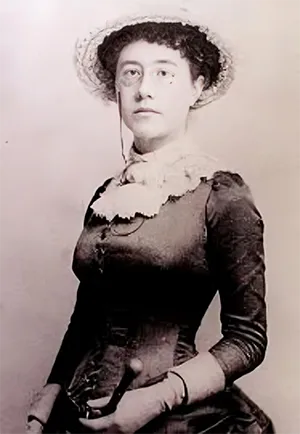
Christina Macpherson as a young woman
The story gets a bit murky at about this time. The best interpretation is that Christina and her family stopped at Winton for a few days, prior to proceeding to Dagworth, where they bumped into Christina's old school friend, Sarah Riley. Sarah's brother Fredrick lived in the Winton township and owned a number of properties including the local Post Office Hotel and Vindex Station which adjoined Dagworth.
Sarah had been visiting her brother with her fiancée Banjo Paterson already famous for writing the poem The Man from Snowy River.
The Macphersons invited Banjo and Sarah to visit them at their property at Dagworth.
Collaboration with Banjo Paterson
As part of an evening's entertainment Christina played the zither or autoharp she had brought with her. One of the tunes she played was the Craigielee March she had heard at Warnambool the year before.
Intrigued by the melody, Paterson asked about the tune. Christina couldn't name it, but Banjo immediately began crafting lyrics to fit the rhythm. Together, they refined both words and music, drawing on local stories—about a swagman, a stolen jumbuck, and a tragic suicide by a billabong.
The result? A haunting yet rousing bush ballad—Waltzing Matilda that spread like wildfire through Queensland and was an instant hit.
Was Banjo Paterson's Infatuated with Christina?
There is speculation that Banjo became infatuated with Christina. There is probably some truth in this. Christina was a very attractive and well-educated woman from a respectable and wealthy family. Their collaboration may have indeed started innocently enough but as they interacted more and more it appears that Banjo developed an affection for her. This attraction, possibly mutual, may not have gone unnoticed by others. There is no evidence, however, to indicate that any sort of relationship took place. Banjo Paterson's long engagement to Sarah Riley did, however, end soon after this time.
Christina's Later Years
Christina returned to Melbourne to Melbourne never married. She lived the rest of her days in the more affluent suburbs of Melbourne. Christina's grand-niece Diana Baillieu recollects her grand-aunt's as a jovial lady who played the piano often.
Christina died in obscurity on March 27 1936 and was buried in St Kilda Cemetery, without a tombstone.
Rediscovering Christina Macpherson
It wasn't until the late 1970s during an ABC documentary, on Waltzing Matilda, that her burial plot, without a tombstone, was rediscovered. Subsequently, Christina's grand-niece Diana Baillieu had a small marker placed on the spot where she was buried.
This small marker on a long-forgotten grave-site is the only recognition, it seems, given to the woman who inspired the creation of Australia's most treasured song.
Christina Macpherson recollects How Waltzing Matilda was Written
Until a letter and music sheet in Christina's own handwriting was presented to the National Library of Australia, there was little direct evidence to validate Christina's contribution to this iconic song. These records clearly demonstrate that Christina played a vital part in the composition of Waltzing Matilda.
Here is an extract from an undated and unposted letter Christina wrote to Dr. Thomas Wood, an examiner for the Associated Board of the Royal Schools and author of the book Cobbers published in 1934.
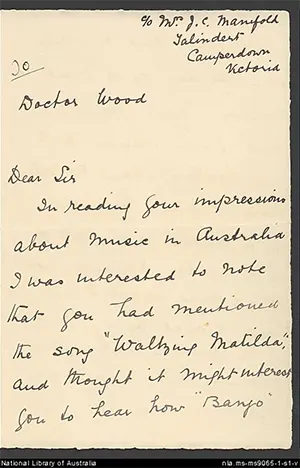
Letter written by Christina Macpherson
Dear Sir
In reading your impressions about music in Australia I was interested to note that you had mentioned the song 'Waltzing Matilda', and thought it might interest you to hear how 'Banjo' Paterson came to write it. He was on a visit to Winton, North Queensland, and I was staying with my brothers about 80 miles from Winton. We went in to Winton for a week or so & one day I played (from ear) a tune which I had heard played by a band at the Races in Warnambool, a country town in the Western District of Victoria. Mr Patterson asked what it was—I could not tell him, & he then said he thought he could write some lines to it. He then and there wrote the first verse. We tried it and thought it went well, so he then wrote the other verses. I might add that in a short time everyone in the District was singing it. There are always numbers of men travelling about the country, some riding & some on foot & they are usually given rations at the various stations that they come to, but in Queensland the distances are so great that they help themselves without asking. On this occasion my brother & Mr. Paterson were out riding and they came to a waterhole (or billabong) & found the skin of a sheep which had been recently killed—all that had been left by a swagman and he made use of this incident—
When Mr Paterson returned to Sydney he wrote and asked me to send him the tune. I am no musician but did my best: & later on he told me he had sent it on to a musical friend of his who thought it would make a good bush song. It was included in the Student's Song Book and was frequently sung at the Community Singing—
I hope I have not bored you about this
Yours sincerely
(Miss) C.R. Macpherson
P.S. I presume that you know that 'Waltzing Matilda' means 'Carrying a Swag'—and that 'Jumbuck' is the natives' name for a sheep.
Redicovery of Christina Macpherson's Music Sheet
This music sheet in Christina's handwriting was presented to the National Library of Australia in 2008. Its existence first came to light in 1971 in a letter written by J.R.Y. Bartlam to the Bulletin Magazine.
Hear the original version here.
Christina Macpherson: A Requiem for a Forgotten Composer
Though forgotten for decades, Christina Macpherson’s story is now told. Her memory lives on in every performance of Waltzing Matilda, a song born from her love of music, her remarkable ear, and a chance encounter with a great poet in outback Queensland.
All Rights Reserved. (Last Updated: Jun 12, 2025)
